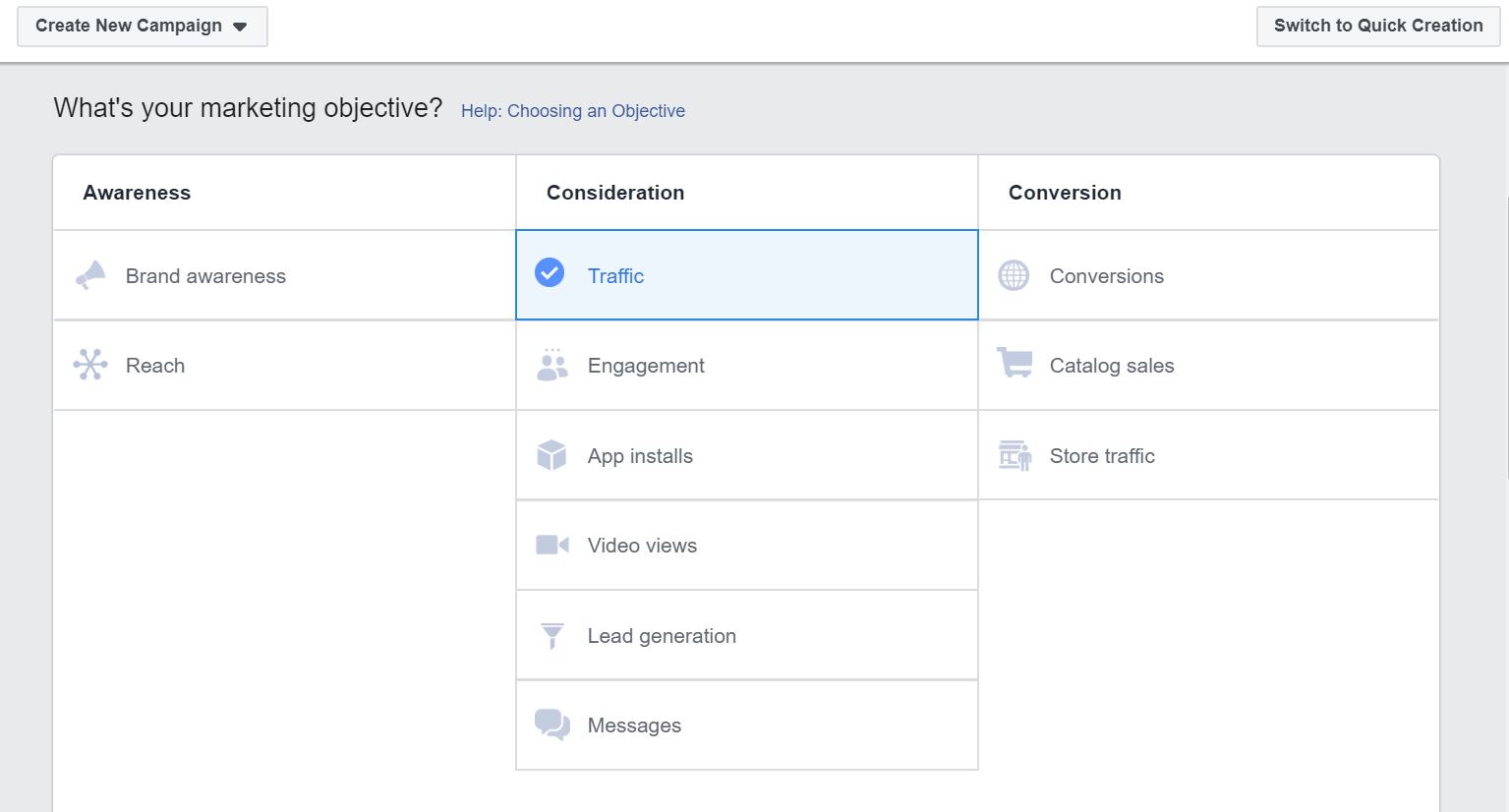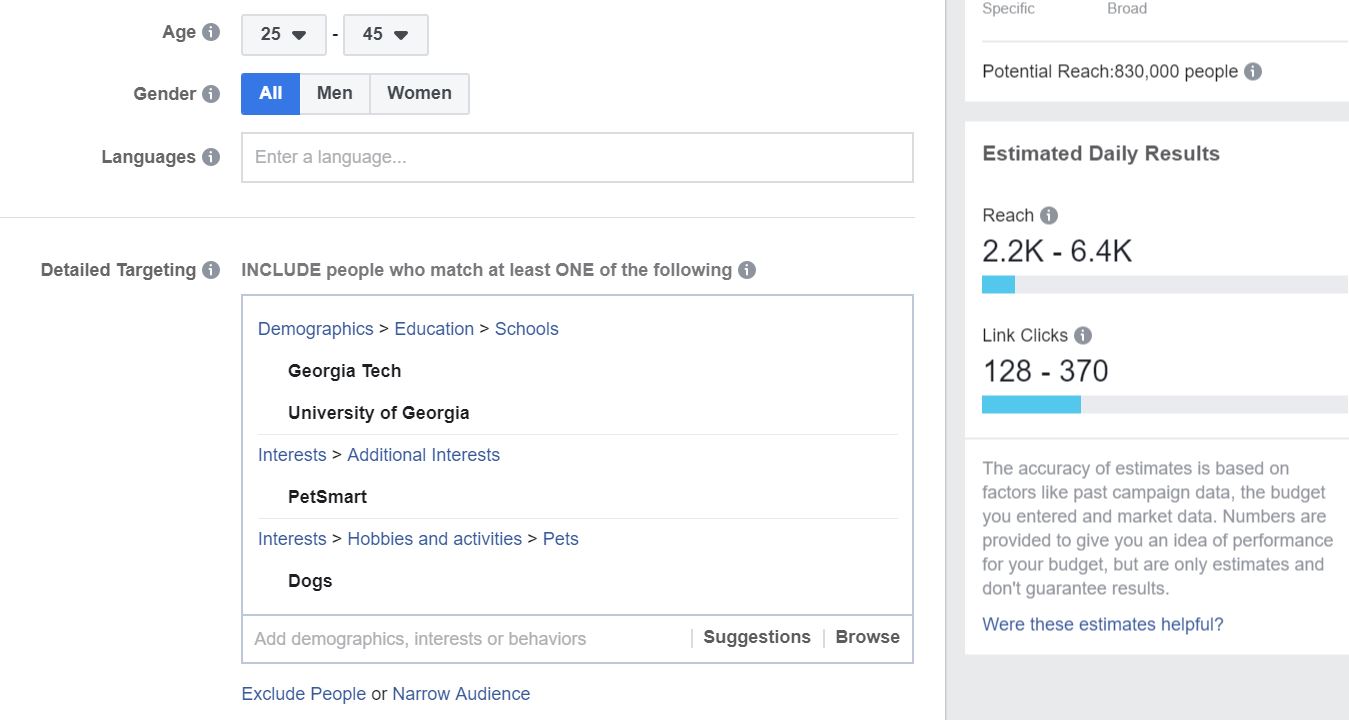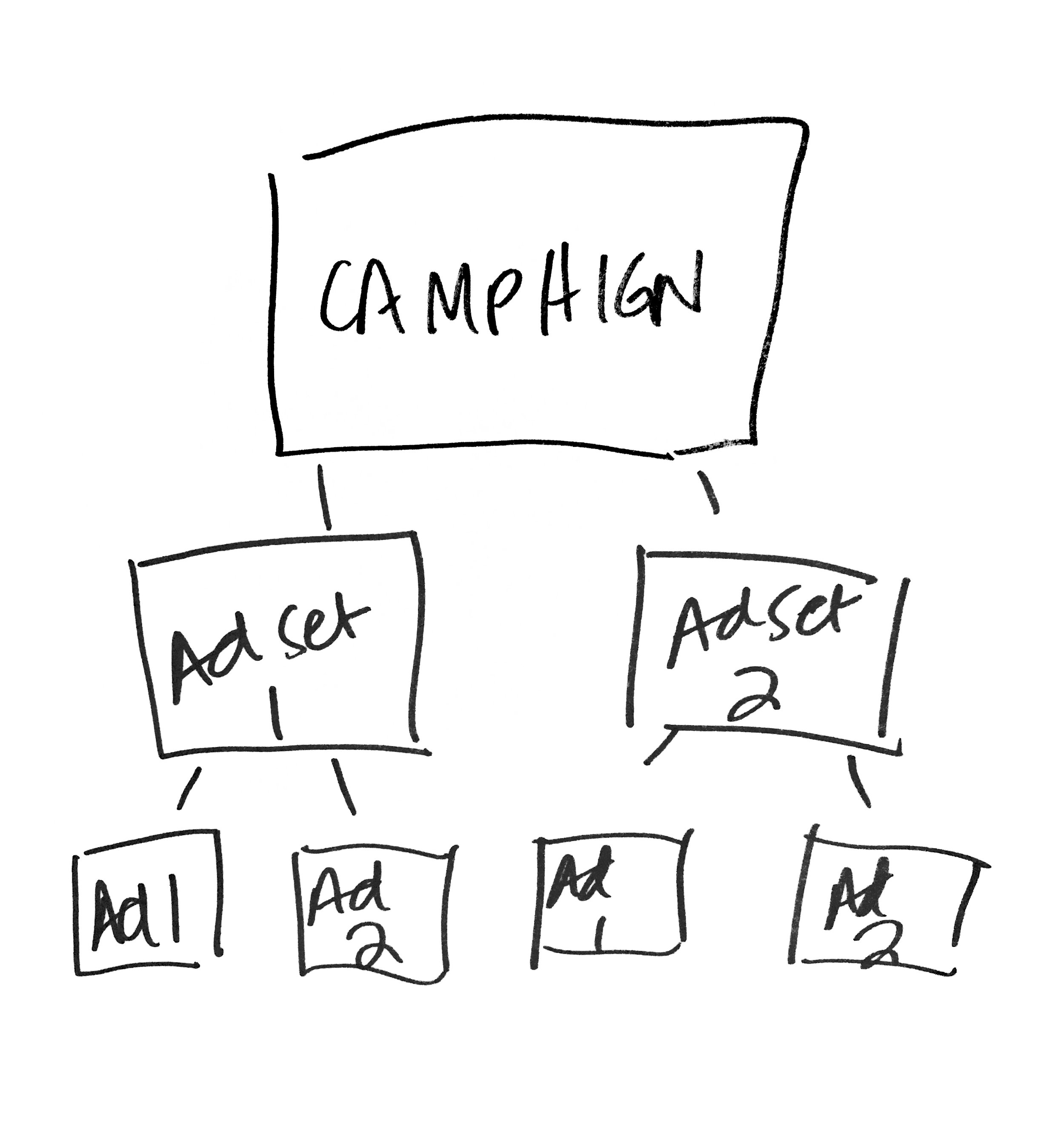I have a new tutorial for you all today! Here I discuss how to structure your social media ad campaigns. I’ve used Facebook as an example here, but this will help you across platforms. Watch to gain a better understanding of campaign structures, including ad sets, competitive ad placements, and consumer targeting.
Social Media Ads Account Structure
Planning on launching a Facebook, Google, or other social network or pay-per-click ad campaign? If so, I would like to talk to you about the importance of ad campaign structure. This is how to properly set up and configure your ad campaigns.
When it comes to ad campaign structure, this is probably—for novice and beginner advertisers—one of the most easily overlooked areas. And that’s because people think about just getting ahead to creating the ad. But every step of the process is important, which is why I wanna spend a little time emphasizing that the way you configure your ad campaigns has a huge impact on how much you end up spending. It can have an impact on a higher or lower cost per click. It can have an impact on the relevancy of your ad. So, those are some important things to think about.
For most people, the main objective in their ad campaigns is to get the cost down, to get a lower cost per click, and to get more people who are truly relevant and interested in your product or service over to your website. You don’t want to spend money or waste money on irrelevant clicks, letting some of these networks like Facebook and Google Ads take your money. Because if you’re not careful, I hate to tell you, but that will happen. So, let’s talk about ad campaign structure, and some ideas and best ways on how to do it.
Let’s start out by using the example of Facebook Ads. Do note, this general structure that I’m going to share with you applies across the board, no matter where you’re running your ad campaign. This includes other social networks like Twitter, Snapchat, Linkedin, Pinterest, and Instagram. They’re all quite similar in their approach – all honestly have kind of followed suit with how Facebook advertises and how you set up ad campaigns. I’d also like to add that Google Ads is slightly different. But generally speaking, when it comes to structuring your ad campaigns, it is also quite similar. You could take this knowledge and apply it in other places.
Number one, hopefully, by now, you’ve been in Facebook, and you’ve at least created an Ads account. And if you haven’t, pause right now, go to Facebook and set that up. You can set it up under your personal profile if you’re running your own business. If you are on a team and part of a larger organization, I would recommend you do it under Facebook Business Manager. Get an account created.
Over the past year-and-a-half, Facebook has kind of changed and revamped the way Ads Manager looks. When you go into Ads Manager, you’ll see a few key areas. There will be tabs labelled Campaigns, Ad Sets, and Ads.
Now, let’s break down the importance of why you need to understand structure and what those tabs really mean. When you’re setting up an ad campaign, the first thing you need to do is think about the campaign from the campaign level. When you go in to set up a Facebook ad, one of the first things it will do is ask you: what’s your objective? So, when you are setting up a campaign, you need to think about, “Is my goal on Facebook today to get more people to like my company page? Or is it to get more people to go back to my website to click on things? Or is it to get people to watch a video? Or is it to get people just to generate brand awareness to know more about my ads?” So, you really need to think about what your objective is.
In this case, I’m going to use the objective—that honestly, at least 60% to 75% of my clients go for: generating traffic. Most people want to get traffic to their website because they want conversions. Which simply means, you want people to sign up for something, you want people to buy something, you want people to register for something, you want people to engage in your site in some type of way, shape, or form so that they become a lead. Conversions are really important, right? So you need to identify that objective at the campaign level.
The next thing you need to do is break the campaign up by ad sets. Now, what will happen when you go in to create your campaign, you only create one ad set at a time. Hidden secret number one: you need to know that you have the ability to create more than one ad set, because Facebook won’t ask you. Now, why would you have more than one ad set in a campaign?
Well, let’s use a quick example. Let’s say that I run a dog daycare business, okay? And for this business, again, I want to get people to my website. And why do I want to get them to my website? I don’t want them there just looking. I want them to actually book daycare service for their dog at my business, right? So, my goal is going to be to get traffic, and the conversion I want is for them to book service. Therefore, when I go to create ad sets, there’s going to be different ways that I target the people that I’m interested in clicking on my ad.
The most common mistake I see when I’m consulting with clients and reviewing their ad campaigns is that they throw all the ways that they want to target people to come to their business under one single ad set. For example, let’s think about who would want to do business with a dog daycare, right? You have people who like to travel, you have people who are parents, you have people who are just into dogs, in general, you have people who are dog owners and dog lovers. And then, on top of that, I’ll see a lot of business owners making the mistake of saying, “Oh, well, I want people who are college-educated. And I want people who also like dog movies. And I want people who also live in this certain zip code. And I want people who recently moved.” They’ll throw them all under one large ad set. The challenge in that is you end up spending a lot of money because you haven’t separated those groups out.
The idea behind creating multiple ad sets is to separate them by theme. Think about who you want to target, and then break them up into different groups. Based on you breaking them up into different groups, that is going to determine what ad sets you create. For our first ad set here, let’s come up with a theme. Let’s just say these are people who are parents. And if I come up with other themes around that, then everything probably needs to center around parents, or kids, or lifestyle.
The advantage in Facebook is that there’s a little button you can click when you’re setting up your detailed targeting called, “Narrow your audience.”
So, I could do parents, and create a condition to say, “They must like dogs or have an interest in dogs.” This allows me to target a more accurate audience: parents plus dogs, dog lovers, or maybe people who are into pet-related items, people who like PetSmart. Anything along those lines, helps me narrow the audience a little bit more. Then when I go to actually set up an ad, I’ll need to tailor my ad to speak to those parents who like dogs or who go to PetSmart. I should be saying that in the ad to resonate with them, because it just goes back to who I am targeting. Now, that’s ad set one, just one theme we might use.
The second theme we might think could be totally different, so we will move away from parents. In this case, we’ll target local alumni. People who might be alumni of certain colleges my in area, people who watch teams. I live in Georgia, so let’s just say I target University of Georgia and Georgia Tech. But I also need to make sure, because I don’t want to just students, that I target independent, qualified adults who make the household decisions, who have dogs that they need to put in daycare because maybe they’re working or traveling. So, in this case, I’ll also target by age. Let’s use 25 to 45 years old.
So, now we’re getting a little more specific, right? But the difference here is, in one group, I’m targeting parents, in another group, I’m targeting people who went to certain schools, and I could still add in more conditions. These are college grads who like PetSmart, who like dogs, and whatever else I want to specify there. And same thing, when I run my ad, I could say, “10% off special for UGA grads only. It’s graduation week, enjoy.” By getting more specific in what I say in the ad, it’s more likely, again, to get people interested in your offer. And there you go, right back to conversions!
Finally, under each ad set, my recommendation is to consider running at least two ads per ad set. These ads can have different variations in terms of the images you select if you’re running an ad through social media. If you’re running an ad somewhere like Google Ads, you can have just different text, if it’s like Google Search. We need to be testing.
Marketing tip of the day: Always be testing!
We should always be testing variations. And having multiple ads lets us do that. Also, it lets us know if the college grad group was more responsive than the parent group. Which one works better? That helps you start to get your cost down because you’ll easily start to see which ads are performing better, and you can turn off the ones that aren’t doing as well.
So, that’s the importance of campaign structure. For more tips like this, follow us on social media @GoGetterGroup or @SonjaCrystal, and you can visit us on our both websites gogettergroup.com or sonjacrystal.com. Sonja Crystal’s revolved around training; Go Getter Group is all of our services as a marketing agency. Hope this was helpful. Thanks so much!
Strategy
Social Media
Categories
Social Media & Digital Marketing Training
Tools, Templates, and Resources
work with me
1:1 VIP Power Day
LISTEN TO THE
10 mINUTE mARKETING PODCAST
I'm Sonja — social media and digital marketing trainer, consultant, and strategist. I'm here to help you and your team work smarter.
TAKE ME THERE!
Listen to the podcast now!
Want More 10 Minute Marketing?
Gain access to my exclusive audio-only playlist with 7 short episodes of 10 Minute Marketing that will give you timeless digital marketing and social media guidance you can implement right away. New to learning how to become more effective with your online marketing? Start here.
Free Audio Training For Busy Professionals




